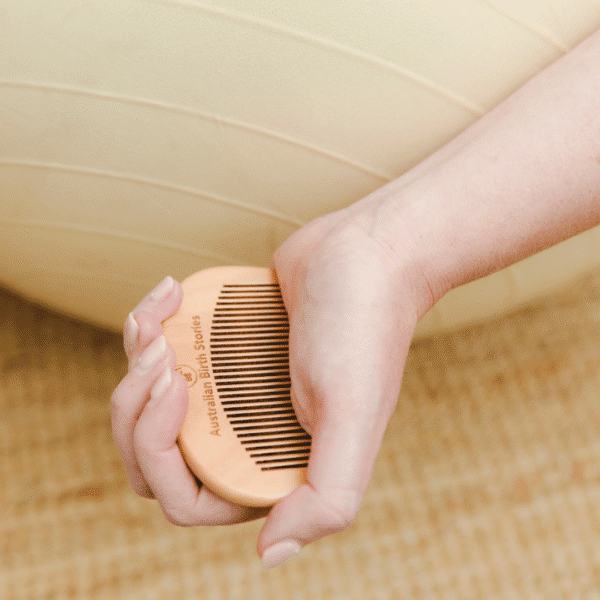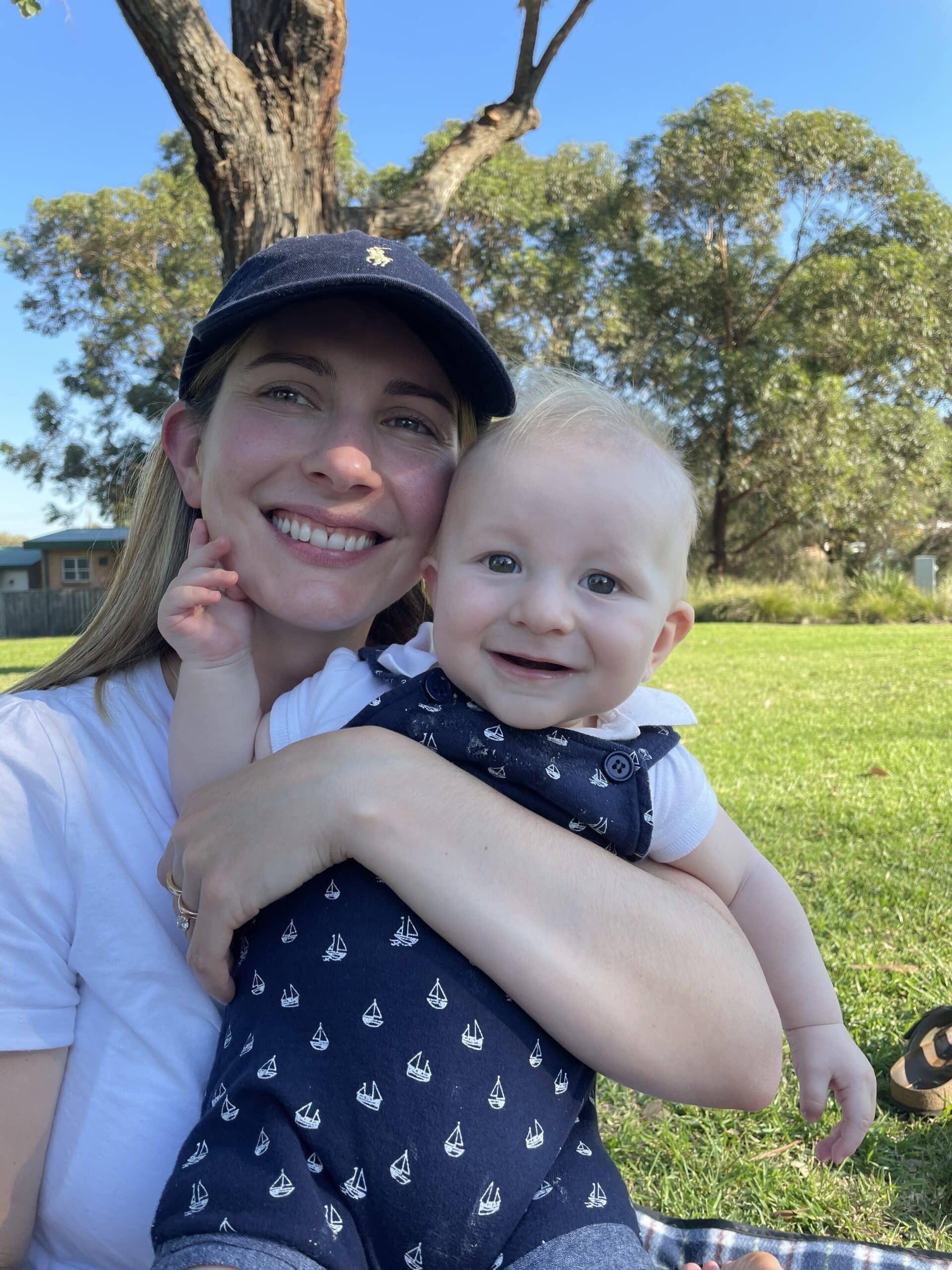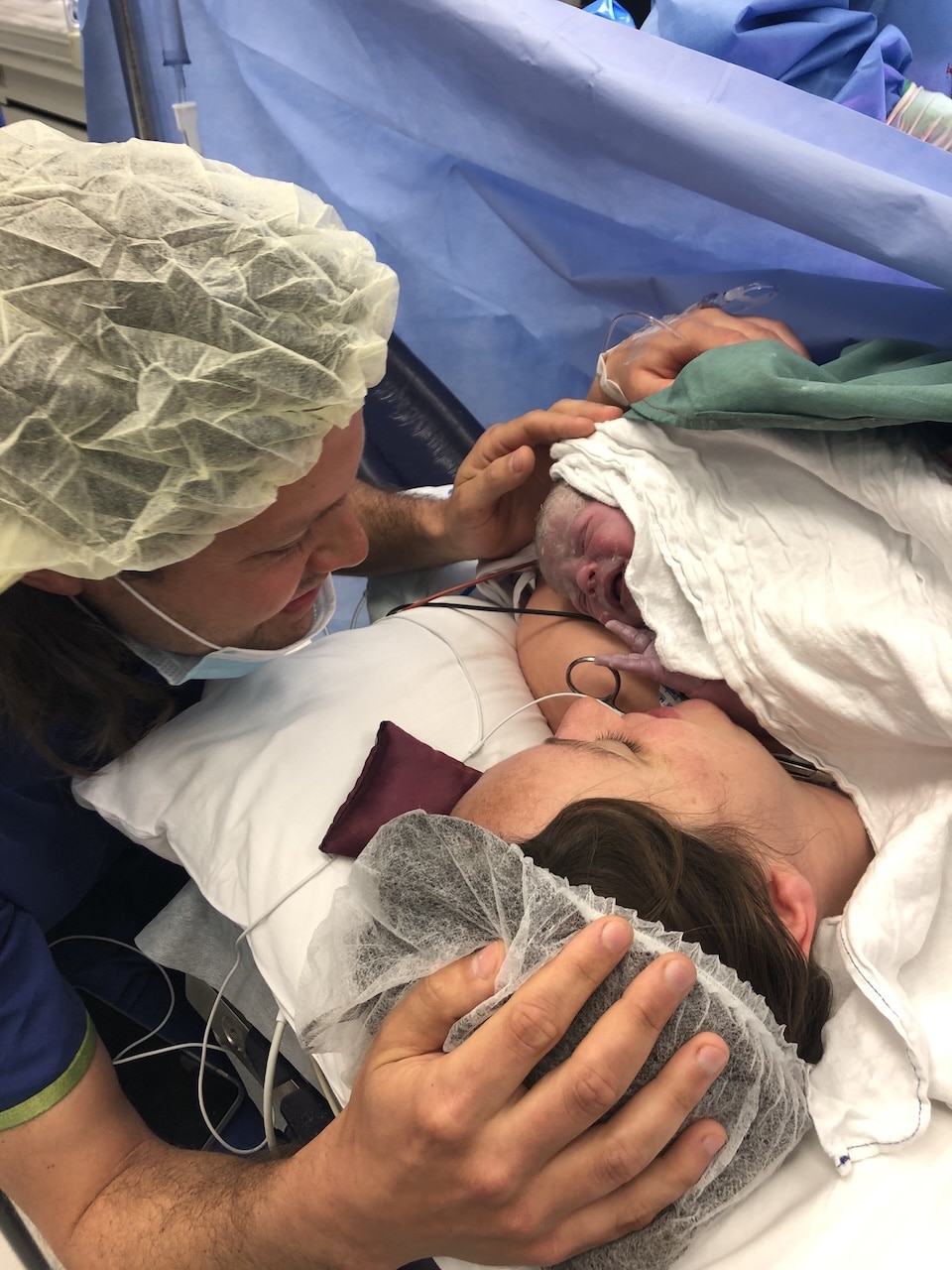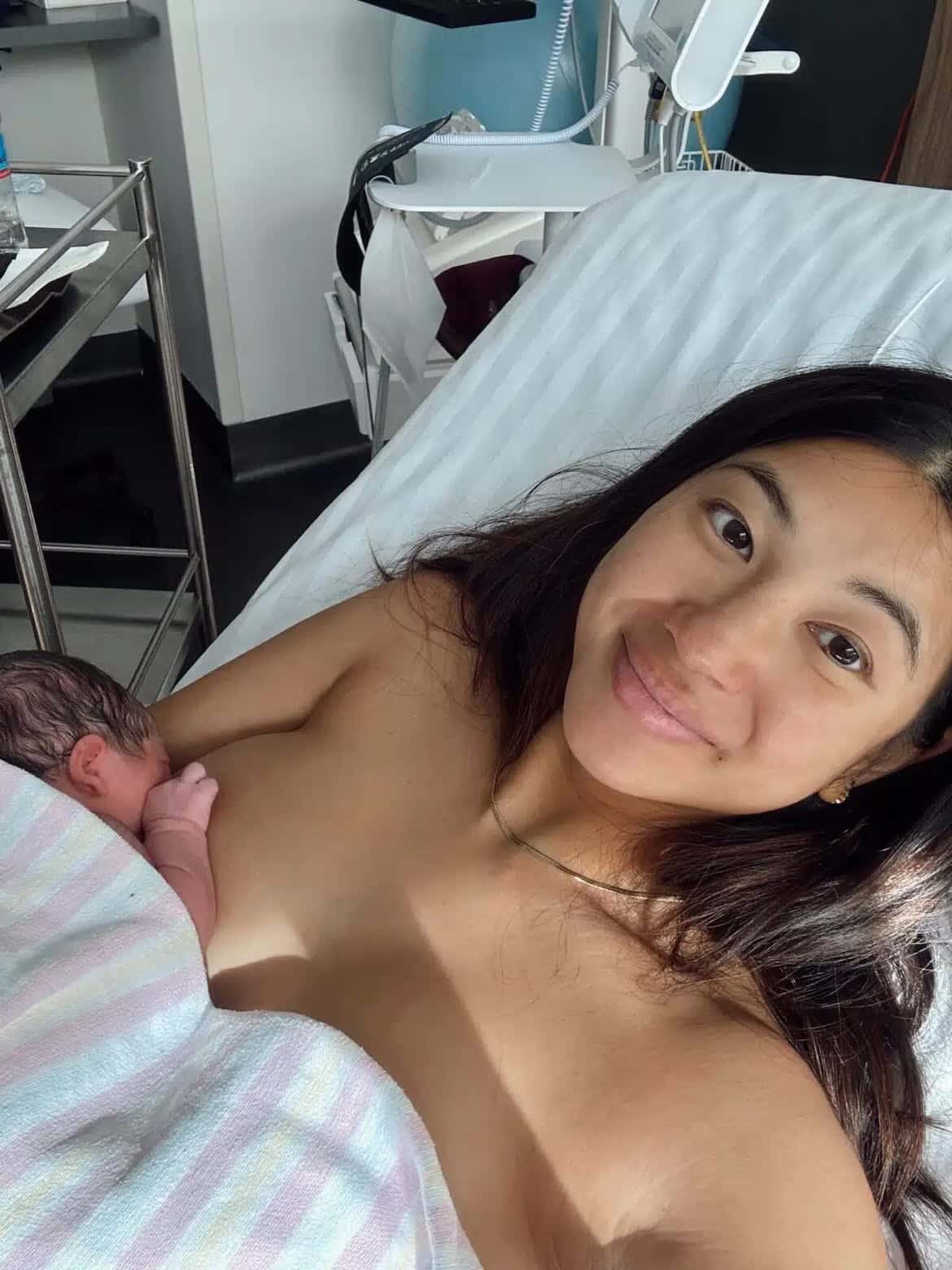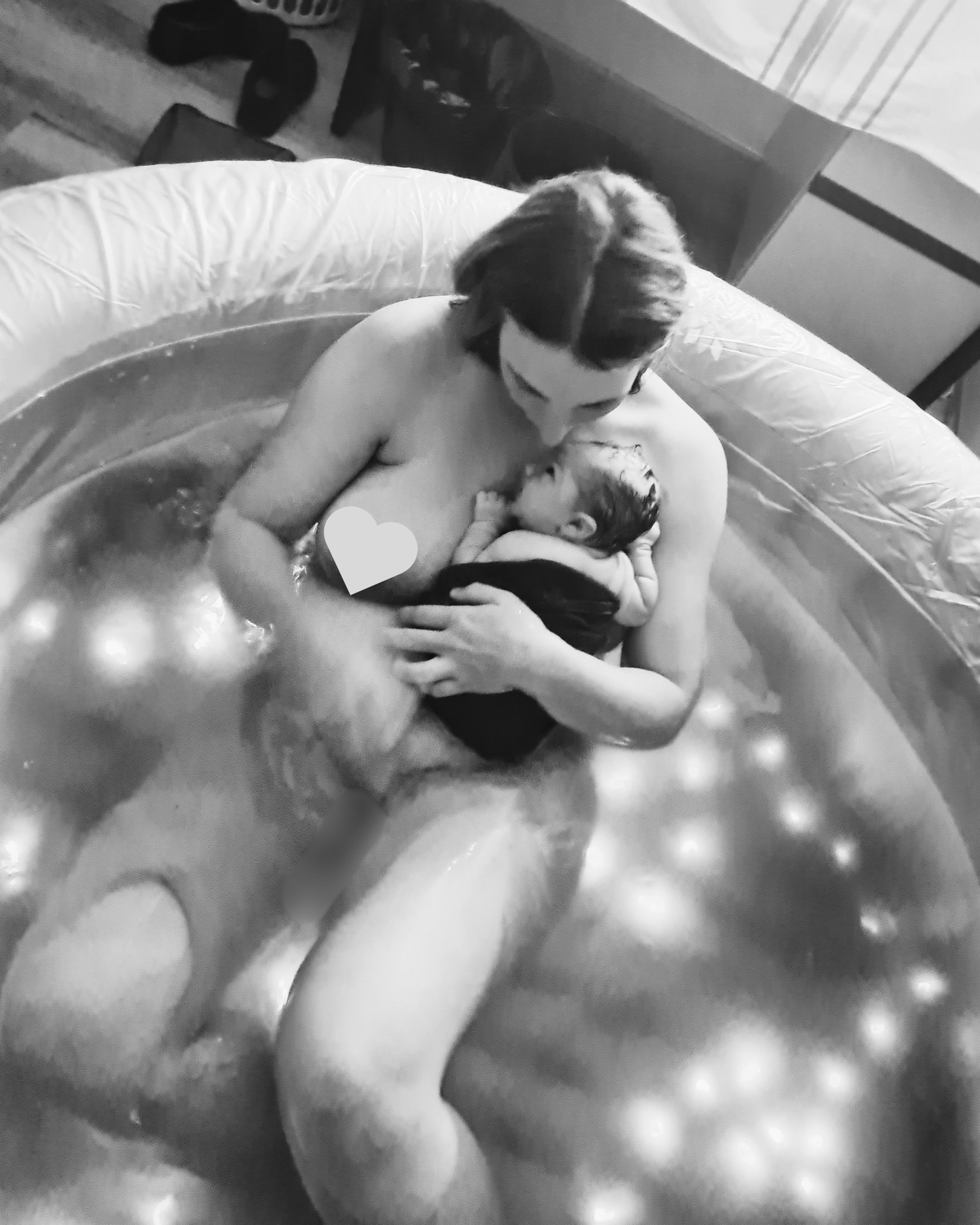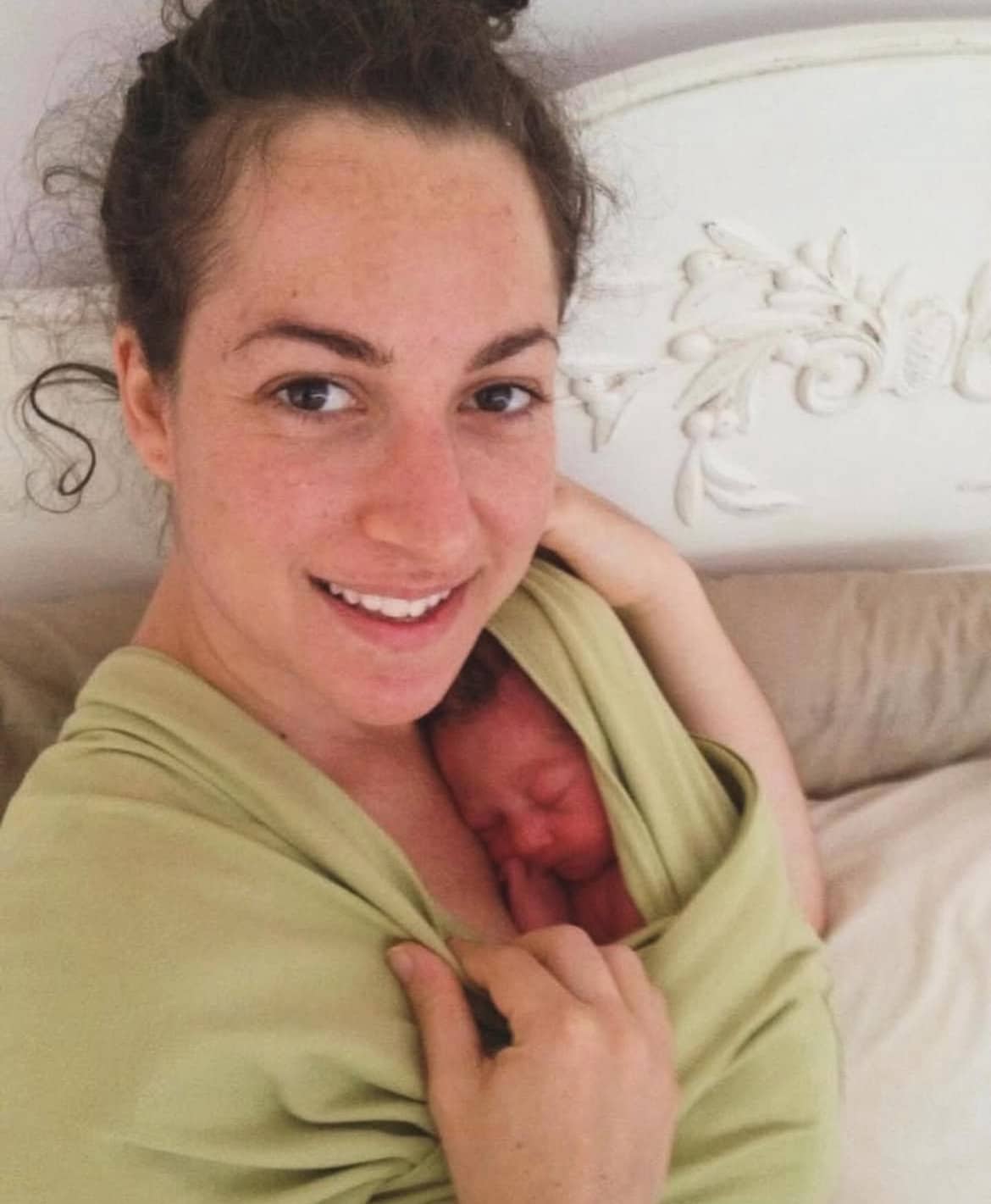Podcasts Gemma – Fraternal Twins, MGP, Sunshine Coast Hospital, CMV
EPISODE 467
Gemma – Fraternal Twins, MGP, Sunshine Coast Hospital, CMV

In episode 466 Gemma discusses her fraternal twin pregnancy and cytomegalovirus (CMV), a common virus that was active in her system in early pregnancy. There’s not a lot of awareness around CMV in pregnancy and Gemma’s story is the first to address it on the podcast. It’s a very common virus – about 70 percent of the population has had it – but because it’s mostly asymptomatic, many people only know they’ve got it when it’s picked up in a blood test. Unfortunately if it’s acquired in pregnancy it can significantly affect the baby in utero; there’s a vast spectrum of issues that can arise including loss of sight and hearing and brain development.
If you get a preconception blood test with your GP, they’ll likely test for CMV and will be able to tell you if you’ve had it in the past. They may also discuss the importance of hygiene, especially if you spend time around young kids as they’re most likely to transmit it.
“We got married in October 2018 and we fell pregnant a few months later. Finding out we had twins was a shock. My husband’s sister had identical twin boys the year before so it seemed ridiculous that our immediate family would have two sets of twins in two years. We watched what she went through and it’s beautiful but it’s also a big effort so we knew what we were in for.
“We got through the first trimester thinking that we had one baby and then we found out we were having twins at the 12 week scan. I’ll never forget that feeling; I looked at the sonographer and I asked if there were two. She told me there was and I looked at Jake and he just couldn’t believe it. It was an emotional ride but we were excited.
“I got into the MGP programme at Sunshine Coast University Hospital and my midwife was phenomenal. She was a massive support for us during pregnancy and postpartum; she was an amazing advocate for us. I wasn’t sick and the twins were growing well and honestly my only symptom was carpal tunnel so the midwifery programme was happy to continue looking after me. I felt really supported and heard and if I was ever concerned, I would send my midwife a message and she would reply really quickly which was really comforting.
“At 20 weeks we went for our morphology scan and then from 24 weeks onwards I was under the care of an obstetrician at SCU. Twin B looked like she’d dropped off her growth percentile so out of caution they took some bloods to check for underlying causes. The next scan was a week later and the maternal foetal medicine doctor explained to us that we could be looking at Cytomegalovirus (CMV). It’s a common virus that a lot of people contract in their life and often it’s not symptomatic but if you contract it in pregnancy it can be catastrophic to your baby in utero. From that point things got really hectic, really fast.
“It’s still a fairly grey area, its effects are very broad. Even sometimes a top infectious disease doctor won’t have the answers to your questions. It was really daunting and scary. I’m really grateful they were diligent and did the bloods because it could have been missed. We had time to digest things slowly as they happened but they kept saying that it was a possible scenario. It was a watch and wait type of thing. Many of the things can’t be diagnosed till birth; sight, hearing, brain function. We were offered an amniocentesis but we declined because it wasn’t going to change the outcome and it would only increase the risk of premature labour.
“We had scans regularly to monitor their growth and look carefully for indications that they may have been infected. I joined a multiples group and a CMV group. If you google CMV in unborn babies, it doesn’t tell you anything pleasant; it can liquify brains, it can cause cerebral palsy, epilepsy, spina bifida, hearing loss. The spectrum is so vast.
“It looks like I contracted the virus just before I fell pregnant; the earlier you contract it, the better the outcome for your baby. Our medical team was optimistic because the maternal foetal medicine doctor sourced some blood that I had taken a month before I fell pregnant and he could tell the virus was active then.
“It was a constant rollercoaster; we’d go home from one scan feeling pretty good but then the next week things would change. It was a wave of positivity followed by us trying to stay positivity after learning new things. It’s such a helpless feeling when you’re the one growing the babies but you have no control over what’s happening. We were supported and we were given options. We were always told the truth because we wanted to know the reality of our situation.
“The main marker that took a turn was that the main ventricles of Bridie’s brain were enlarged and they were getting bigger with every scan. Our MFM explained that it could be an anomaly but he was honest in saying that it could be a symptom of CMV. She also had mild Intrauterine Growth Restriction (IUGR). My MFM recommended that I go to a bigger hospital for an MRI and this was at about 32 weeks. It was a horrible experience, laying on my back holding my breath, and it took about 90 minutes but it wa inconclusive because the babies were moving so much so I went down the following week for another one and that showed that the left ventricle was enlarged and the symptoms of that were again, very vast; she could function completely as expected or have very severe learning difficulties, be blind and deaf.
“I don’t ever feel like I went through a phase of denial. I had hoped for a natural birth but as the pregnancy progressed, it was important that Bridie, Twin B, wasn’t under any stress so we were booked in for a planned caesarean. It was the one thing we could control. We asked to have a tour of the NICU just in case Bridie needed it.
“I was 37+4 on the day of the caesarean and that was a great gestation for twins. By the time we got to that stage we were tired of talking about the what-ifs, we just wanted to hold our babies and move on to the next chapter. Anyone who has had a caesarean will know that it’s a very controlled experience but it’s also surreal. There were so many people in that room; anaesthetists, midwives, obstetricians, and the extra team so all up there was about 30 people in the room which made it feel quite daunting.
“The birth itself was beautiful although I did lose a lot of blood but that’s expected when you birth two placentas. Both the babies came out screaming and that little blip of time was perfect. They both needed to be checked really thoroughly by so many people, I got to have them both on my chest and they were touching each other which was a priority for me.
“Our stay in hospital was eight days and half of that time was spent sorting out the CMV. Their urine was tested and that was when it was confirmed that they were both infected with it which was a significant blow. I’ll never forget that feeling because we’d tried to be so positive. From there it was a whirlwind of tests; full body scans, lots of blood tests, an opthamologist to check their eyesight and the healthy hearing test that all babies have. Hugh passed the hearing but unfortunately Bridie didn’t; her hearing loss is permanent. From the cranial scans of Bridie’s brain they discovered that she had cysts on the ventricles as well as on the back of the brian. Once we were delivered that information we had questions but no one could really tell us anything.
“I had a turn when I was in the shower the day after the birth. I was sitting on the chair but I fell to the floor. The team got me back on the bed but it really set me back physically and added to the chaos of what was going on and it delayed me going to NICU to visit Bridie. I needed oxygen for a few hours to get me back to normal.
“We had a counsellor come to see us in hospital and she explained the continuity of care we’d have once discharged. You go into survival mode and even though we knew we’d need help, all our thoughts were with the babies. We definitely felt supported with our mental health.
“We had the option of giving the twins an antiviral drug but again there’s no definitive answer as to how or if it will help. It was recommended for Bridie and we decided to give it to her because the drug is known to stop the progression of hearing loss. Postnatally we had development appointments with paediatricians, physiotherapists, ophthalmologists, speech therapists and dieticians. We had appointments most days at the hospital which made it really hard to establish feeding. Because her white blood cells were dangerously low, we were isolated at home and this was pre-covid. Their first year of life was chaos; it was exhausting and just really, really tough.
“Bridie was fitted with a hearing aid; she has moderate loss across medium to low pitches which is unfortunate because that’s generally a talking voice. But with her hearing aid she functions as normal so we’re very blessed that it works for her. It’s a permanent but manageable part of the CMV.
“We were so anxious about their eyesight but luckily everything looks normal. They have six-monthly reviews just to make sure we’re aware of any changes. Hugh has a severe speech impairment but everything else seems fairly normal for him. We consider ourselves very lucky as ultimately the outcome for our babies is so positive.”
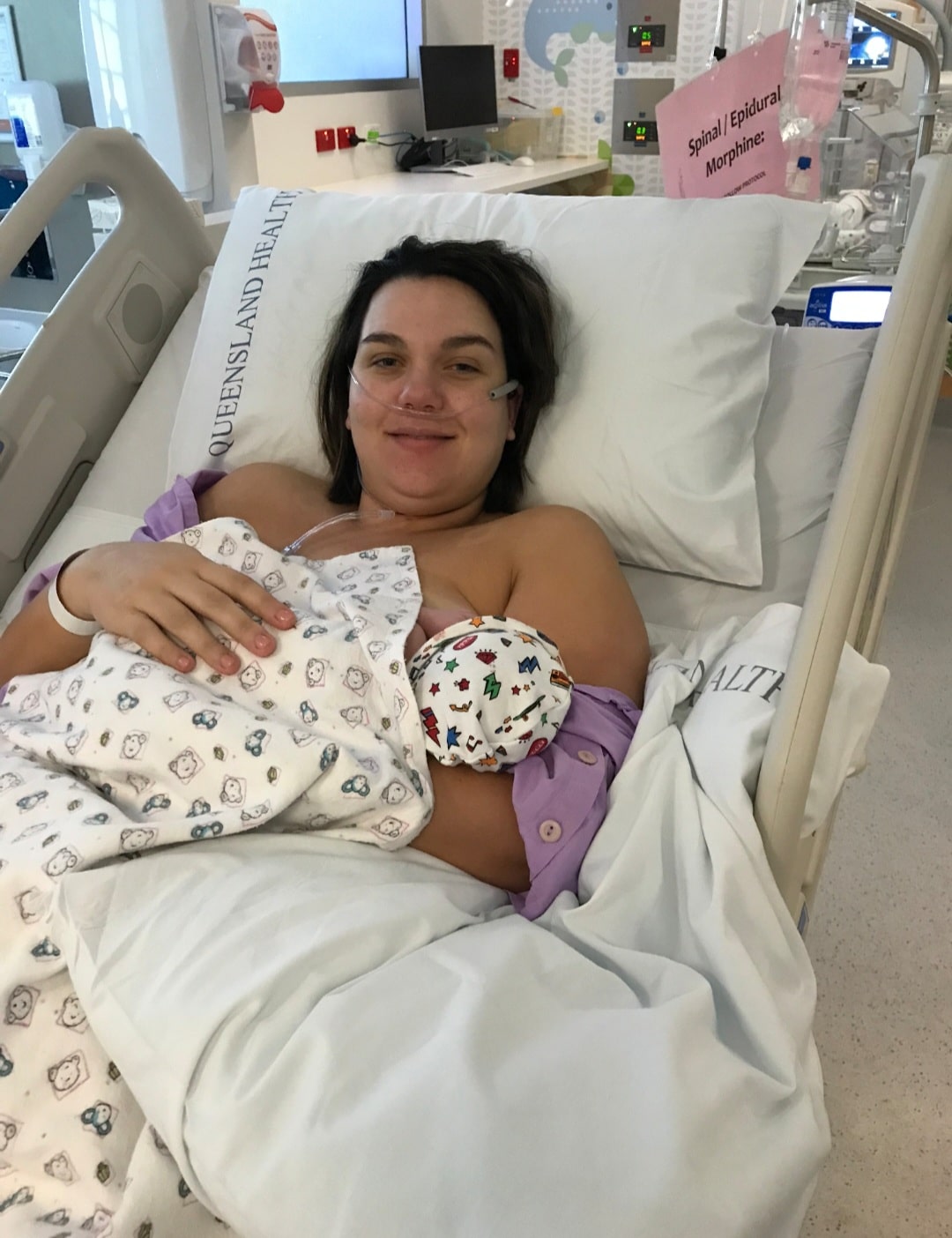
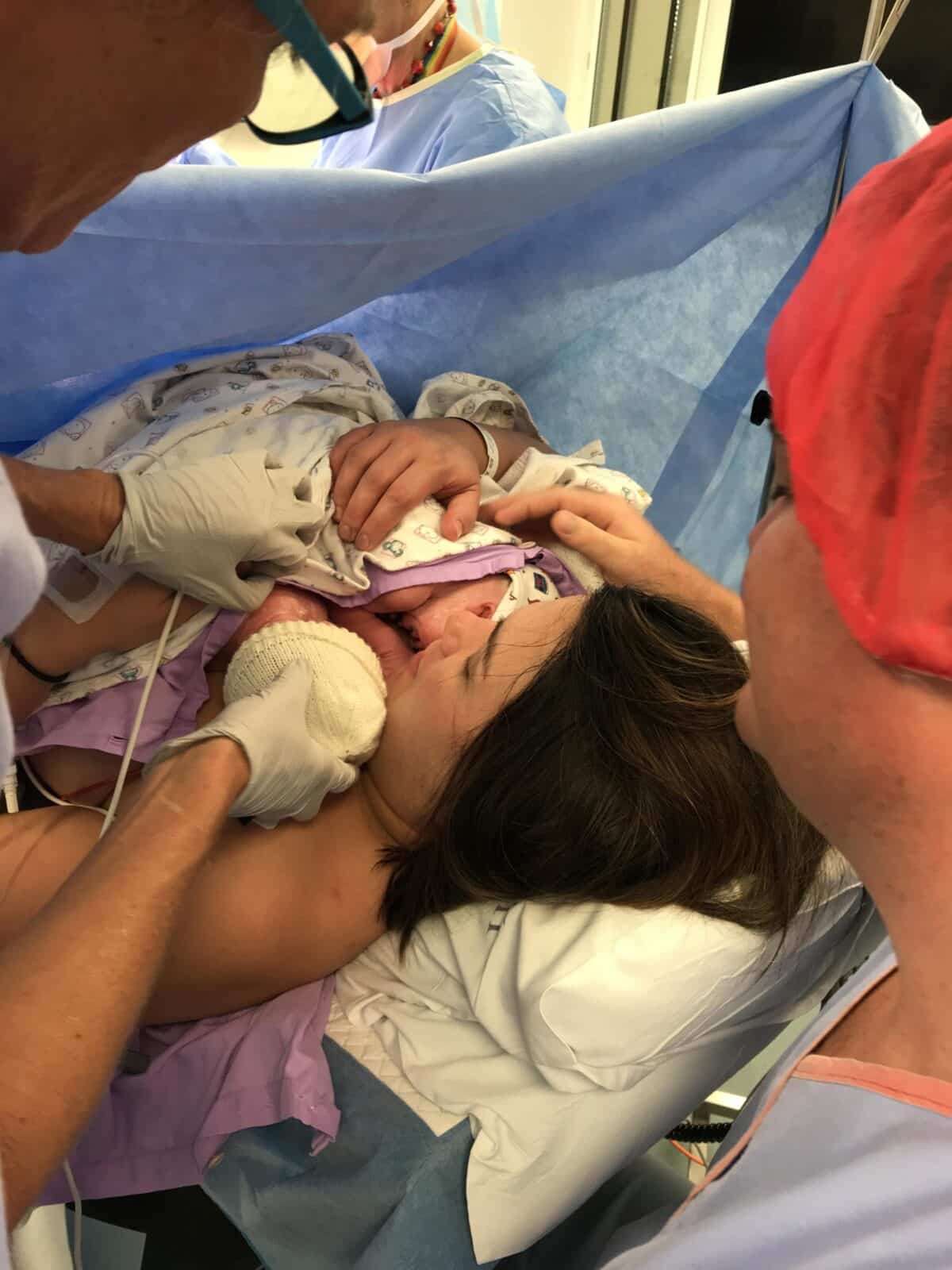

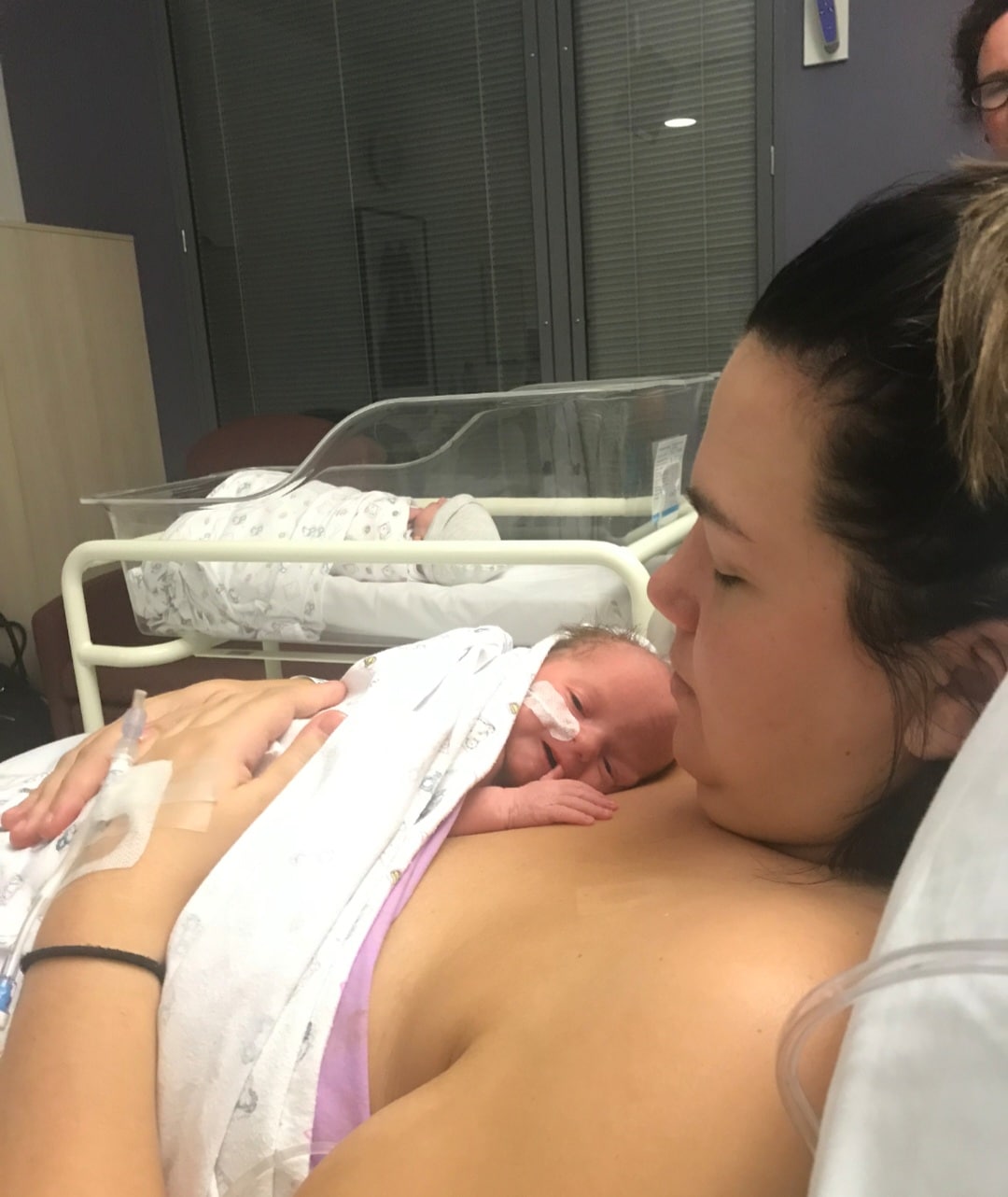
Topics Discussed
CMV, Fraternal twins, MGP, Sunshine Coast Hospital
Episode Sponsor
iL Tutto Glider nursery chairs offer a smooth motion that’s gentle on your body, without needing you to engage your core to create the movement. iL Tutto glider chairs feature either electric – like their new luxe Frankie Electric Glider Recliners – or spring-loaded recline – such as the Chelsea Glider Recliner Chairs available in a range of premium fabrics.
The Chelsea Glider Recliner Nursery Chairs feature a high backrest and lumbar support for ergonomic comfort while feeding. The armrests are also at the right height for feeding, avoiding the strain that can come with armrests that are too high or non-existent.
Your baby will love the glide movement and your Glider will take up less space than a rocking chair. iL Tutto Gliders offer the best of award-winning Australian design that accounts for the unique needs of parents. Designed with style, luxury and comfort in mind, their glider nursery chairs will change your parenting life for the better and will last, growing with your family.
Explore the complete range and discover the perfect glider for your nursery using code GLIDER20 at checkout for 20% off any full price Nursery Chair, available at iltutto.com.au, code ends 30th April 2024.
Categories
Related Products
-
Birth Combs: Harness Your Body’s Natural Pain Relief
$24.95Crafted from smooth, natural wood, our birth combs activate specific pressure points in your hands that trigger your body’s innate pain-relieving responses.
Join the conversation
Sign up to get the latest updates, freebies, podcast releases straight into your inbox
@AustralianBirthStories
Follow along with us
@AustralianBirthStories
Follow along with us
@AustralianBirthStories
Follow along with us
@AustralianBirthStories
Follow along with us
@AustralianBirthStories
Follow along with us
@AustralianBirthStories
Follow along with us
@AustralianBirthStories
Follow along with us
@AustralianBirthStories
Follow along with us
@AustralianBirthStories
Follow along with us
@AustralianBirthStories
Follow along with us
@AustralianBirthStories
Follow along with us
@AustralianBirthStories
Follow along with us
